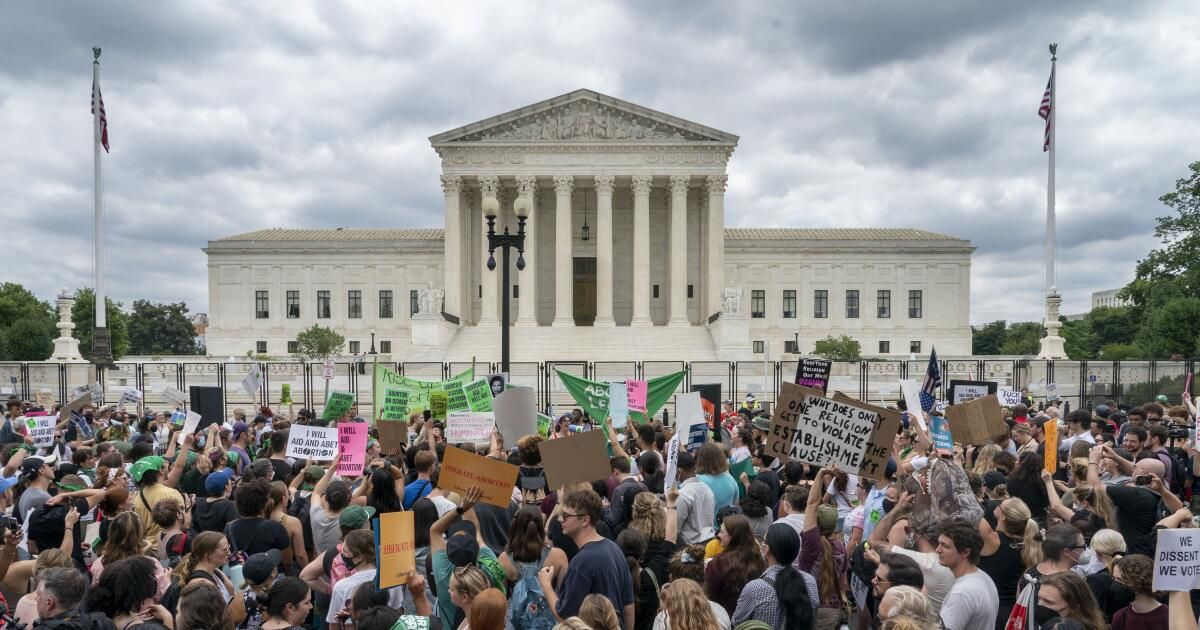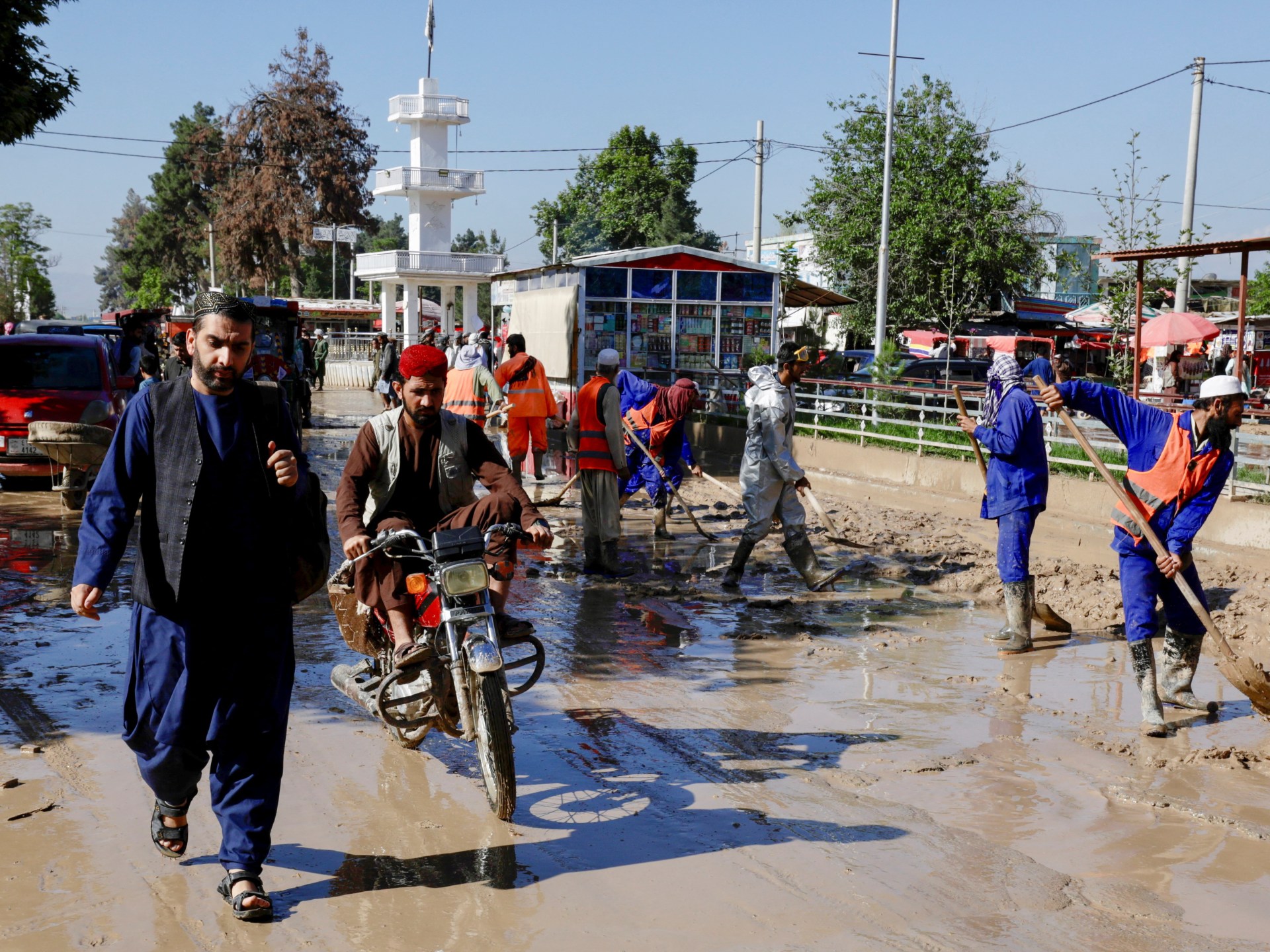Kori Thompson had long struggled with the idea of having a child.
The 24-year-old was worried about the world a child would face when climate change took hold on the planet, fearing the environmental devastation and economic strain that could follow. He had been thinking about having a vasectomy since he learned about the sterilization procedure on a television show.
But “what really triggered it was the court decision,” Thompson said.
After the Supreme Court overturned Roe v. Wade nearly two years ago, paving the way for states to introduce new restrictions on abortion, doctors began to see more young adults seeking vasectomies or tubal ligations, according to new research.
An analysis by researchers at the University of Utah, published as an abstract in the Journal of Urology, found that after Dobbs vs. Jackson Women's Health Organization, an increasing proportion of vasectomy patients were under 30 years old.
That percentage rose from 6.2% to 9.8% after the Supreme Court's decision, according to its analysis of a national database that includes hundreds of millions of patients.
Among the young patients who underwent the procedure was Thompson, who decided to have a vasectomy after the court ruling. In Georgia, where she lives, abortion is illegal at about six weeks into pregnancy, a point before some people know they are pregnant.
“If it is indeed illegal,” Thompson said, “then I felt it was necessary.” His girlfriend also didn't like the effects of hormonal contraceptives, “so now I've decided to use permanent contraceptive methods. “It's much easier.”
Researchers at the University of Utah found that before the Supreme Court ruling, vasectomy rates were consistently higher in states classified as “hostile” or “illegal” for abortion by the Center for Reproductive Rights, compared to the states that were not so restrictive. The same thing happened after the ruling.
However, the researchers also found an overall increase in vasectomy rates after the Dobbs decision, both in states where abortion is heavily restricted and those where it is not.
In California, where state leaders have vowed to protect abortion rights, the rate of men undergoing vasectomies increased after the court decision, from about 7 to 13 per 100,000 potential patients, the Utah team found.
“We're just seeing an overall increase in vasectomies, regardless of the political climate” in each state, said Dr. Jessica Schardein, a urologist at the University of Utah. Schardein said the Supreme Court ruling and the increased marketing of vasectomies may have made more people think about the procedure.
“People in general, even if they don't have a uterus, are taking responsibility for their reproductive health,” Schardein said.
His team also examined tubal sterilizations (a medical procedure often called “tubal tying,” which is performed on the fallopian tubes connected to the uterus) and found that after the court decision, there was an increase in the percentage of patients with between 18 and 30 years old. among those who undergo the procedure.
In Riverside County, Jacob Snow decided to have a vasectomy after the birth of his third child, concluding that it was a safer option than his wife's sterilization option. “There's no reason why all the blame and stress and trying to stop a pregnancy should be on the woman when I can stop it,” the 28-year-old said.
Although Snow was already a father, the doctor resisted because of his age, he said. “They said I might change my mind in the future,” Snow recalled. “They just flat out refused.”
Vasectomies are intended to be permanent. It is possible that the surgery could be reversed with other procedures, but doctors caution that doing so is not a guaranteed option.
Snow eventually found another doctor to perform the procedure. In addition to the first doctor's rejection, Snow said some men were horrified when he told them she had a vasectomy, saying he would make them feel like less of a man. But Snow said he doesn't “feel that reproducing is the way I need to prove that I'm a man.”
The University of Utah findings, presented at the annual meeting of the American Urological Association, have been echoed by other recent research.
Last month, researchers from the University of Pittsburgh School of Public Health and Boston University published findings in the JAMA Health Forum showing “a steep rise” in vasectomies and tubal ligations after Dobbs, with a more pronounced increase in tubal ligation.
The difference “likely reflects the fact that young women are overwhelmingly responsible for preventing pregnancy and disproportionately experience the health, social and economic consequences of abortion bans,” the University of Pittsburgh assistant professor said in a statement. , Jacqueline Ellison.
Another Journal of Urology analysis that included several medical centers across the country, including UCLA, found that after the Dobbs decision, the typical patient seeking a vasectomy was younger than before. The researchers also found that an increasing proportion were childless.
There has also been an increase in patients asking doctors about the medical procedure, said Dr. Kara Watts, a urologist at Montefiore Medical Center in New York City, and waits are longer to undergo surgery afterward. of a query. If wait times weren't an issue, Watts said, “the numbers would probably be even more dramatic.”
Researchers detected a similar trend in the UC San Diego health system, where there was an increase in men seeking consultations about vasectomies after the Dobbs decision, as well as an increase in rates of patients undergoing the procedure after your queries, according to another review submitted. at the urology meeting.
Although California has enshrined abortion rights in its state constitution, “I believe vasectomy visits and completion rates still increased due to national media coverage of the Supreme Court ruling,” said Dr. Vi Nguyen , one of the authors of the analysis.
And at Ohio State University, urologists surveyed patients about why they chose to have vasectomies and found that after the Dobbs decision, they were more likely to cite concerns about abortion access or say they “didn't want to bring children to the current political climate. .”
Other reasons for wanting a vasectomy, such as health problems, did not change after Dobbs, the survey found. Dr. Jessica Yih, an assistant professor of urology at Ohio State University, wasn't surprised.
“Immediately after the Dobbs ruling, many people were extremely concerned about their reproductive rights,” Yih said in an email. “We had a three-fold increase in referrals from patients wanting to make an appointment to discuss vasectomies, and the number of vasectomies performed around that time increased dramatically.”
Abortion has been a highly controversial issue in Ohio, where a law banning abortion after six weeks of pregnancy initially went into effect after the Dobbs ruling. That ban was later stayed in court, and Ohio voters have since backed protections for abortion access in their state constitution.
“Many patients told us in our clinics that they wanted to have vasectomies performed as soon as possible due to concerns about restrictions on abortion access,” Yih said.












